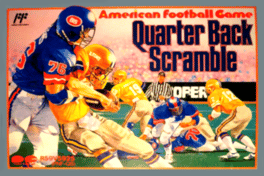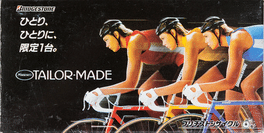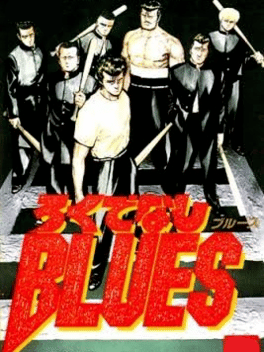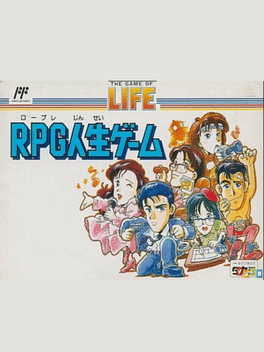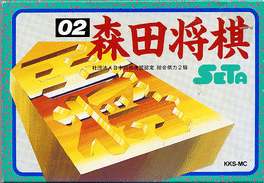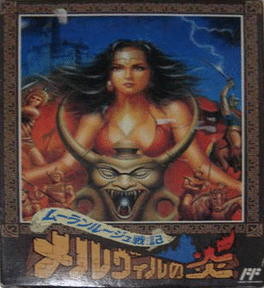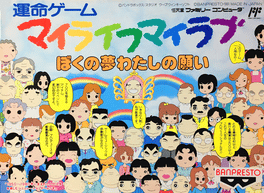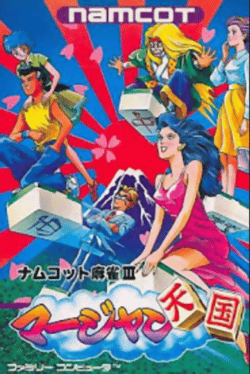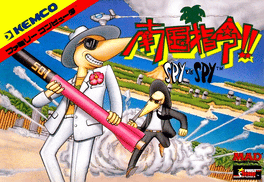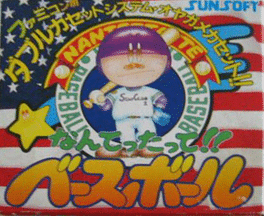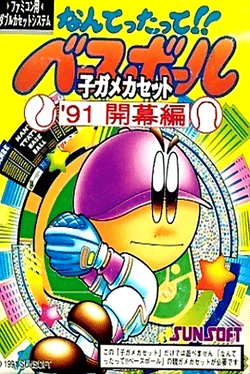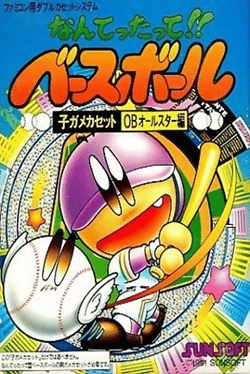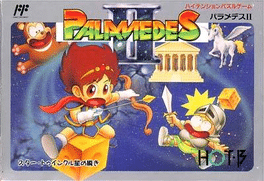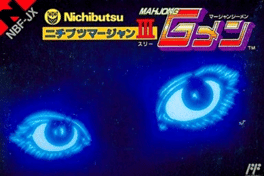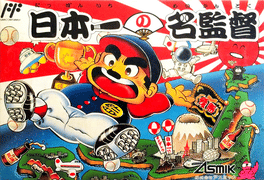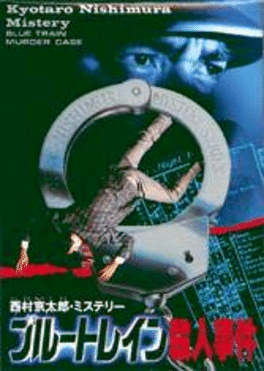Most Popular Family Computer Games - Page 31
-
Quarter Back Scramble: American Football Game
1990
Quarter Back Scramble: American Football Game is a Sports game, developed by Natsume and published by Pony Canyon, which was released in Japan in 1989. -
Racer Mini Yonku: Japan Cup
1989
A board game/racing game hybrid based on a miniature RC car toyline. It was developed and published by Konami exclusively for the Japanese Famicom. Racer Mini Yonku: Japan Cup ("Yonku" refers to four-wheel drive vehicles) is a board game with racing game sections, in that the player has to construct their own RC 4WD car and then race them against their CPU opponents in various events, often taking terrain handling into account. It was based on the then-popular mini RC car toy fad in Japan. The title screen credits Tamiya, a Japanese toy manufacturer that focuses on model kits and RC vehicles, and their logo frequently appears in-game. The game was developed by Konami for the Famicom, and was never released outside of Japan. The player and the CPU opponents take turns moving over a board and acquiring money and parts for their RC car. Money collected can also be spent on new parts. The players' vehicles then race, an automatic process, with the one with the best upgrades usually coming out on top. -
Radac: Tailor-Made
Tire and bicycle manufacturer Bridgestone produced this piece of Famicom software to help its customers build their own custom bikes from the company's assortment of parts. Radac Tailor-Made was thus only given out to Bridgestone dealers, who would probably set it up in their shops so potential customers could play around. Besides illustrating just how pervasive Famicom culture was in the '80s, Tailor-Made is now one of the rarest Nintendo cartridges on the secondary market. -
Rokudenashi Blues
1993
Rokudenashi Blues
1993
An RPG brawler released for the Family Computer and Super Famicom based on the anime and manga of the same name. Both were developed by TOSE and published by Bandai. Rokudenashi Blues ("Good-for-Nothing Blues") is a RPG brawler based on the manga of the same name, which also saw two anime movie adaptations close to its release. The player character, Taison Maeda, is a delinquent student who is training to be a professional boxer. He has a reputation as a powerful fighter among delinquent gangs as a result, though despite being violent he has a code of honor. The Famicom and Super Famicom versions of the game are subtly different due to console differences, but both share their genre, developer and publisher. The Famicom game was released in October 1993, with the Super Famicom version following in April 1994. Characters from this game have appeared in Jump crossover games, specifically Famicom Jump II and Jump Ultimate Stars. -
The Game of Life: RPG Jinsei Game
1993
The Game of Life: RPG Jinsei Game is a Japan-only role playing game for the Family Computer that is similar to Jinsei Game, which is the Japanese version of The Game of Life. The object is to explore a city full of stores, places of employment, and learning places. Starting from home, the player must earn money and statistics in order to unlock the better features of the game. Unlike most games based on the Jinsei Game series, RPG Jinsei Game doesn't use a spinner system. Instead, the controller pad is used for movement and random encounters are featured like in Dragon Quest. The player can also talk to strangers who might either give him/her advice or do something malevolent to him/her. As in the actual Game of Life board game, the player has to choose from a series of careers ranging from a musician to a photographer and even a professional wrestler. Most of these tasks are mundane while one of the quests directly involves chasing down unidentified flying objects. Buildings that are crucial to the quest (other -
Morita Kazuo no Shogi
1987
A Famicom Shogi game developed by Random House and published by Seta. Morita Kazuo no Shogi ("Kazuo Morita's Shogi") is a Shogi game from Random House. The game's namesake, Kazuo Morita, is a famous Japanese Shogi player that had previously been attached to several Shogi games prior to this one. Furthermore, Random House (not to be confused with the famous book publisher) is his development company. As well as playing regular Shogi against an AI opponent, the player has a few options regarding the set-up of the pieces. There is a mode where they place all the tiles on the board themselves, in case they wish to continue an existing game or maybe replay a famous match at its turning point. -
Moulin Rouge Senki: Melville no Honoo
1989
Moulin Rouge Senki: Melville no Honoo is a strategy game released in 1989 for the Nintendo Famicom. Moulin Rouge Senki: Melville no Honoo ("Record of Moulin Rouge War: Melville's Flame") is a strategy war sim with RPG elements for the Famicom. The player controls a party of heroes with an entire army under their control, and fights other armies and random encounters with monsters. To begin the game, the player must purchase and equip their army before setting out. The game's battles play out in turn-based formations, and each formation acts separately and can target different formations on the enemy's side. For instance, the archers can aim for any of the four rows of enemy forces, though front-line melee fighters are far more limited. -
My Life My Love: Boku no Yume Watashi no Negai
1991
My Life My Love: Boku no Yume Watashi no Negai is a Miscellaneous game, developed by WinkySoft and published by Banpresto, which was released in Japan in 1991. -
Namcot Mahjong III: Mahjong Tengoku
1991
Namcot Mahjong III: Mahjong Tengoku is a Miscellaneous game, developed and published by Namco, which was released in Japan in 1991. -
Nankoku Shirei!! Spy vs. Spy
1987
Spy vs Spy: The Island Caper is a competitive multiplayer game where the goal is to recover all the vital items and leave before the other player does the same. It's a tropical-themed variant on the original. The Island Caper plays almost identically to the original Spy vs Spy game, just with a graphically updated island theme. Instead of rooms full of fixtures that items might be hidden behind, the player must search beaches on islands for items buried in the sand. Specifically, they need to assemble a missile from its parts, presumably so it can be launched at the opponent spy's home country. Finding the missile will allow the victorious spy to escape the island via a submarine (which inexplicably also includes an attractive woman). There are also traps which, like in the original, can be placed in spots where missile parts might be to fool opponents into killing themselves. The game was released on many of the home computers and consoles active at the time. Curiously, it also received a Japan-only NES port nam -
Nantettatte!! Baseball
1990
A baseball game by Sunsoft released on the Family Computer in 1991. Nantettatte!! Baseball is a baseball game with the innovative feature of being able to update team rosters without needing to buy a brand new full price game. This is done by inserting a mini-cartridge that updates the roster into the main game. -
Nantettatte!! Baseball '91 Kaimaku-hen
1991
Nantettatte!! Baseball '91 Kaimaku Hen is a Sports game, developed and published by SunSoft, which was released in Japan in 1991. -
Nantettatte!! Baseball OB All Star-hen
1991
Nantettatte!! Baseball OB All Star-hen is a Sports game, developed and published by SunSoft, which was released in Japan in 1991. -
Palamedes II: Star Twinkles
1991
Palamedes II is a puzzle game and, as it sounds, the sequel to an obscure NES puzzler. The object is to throw one of the player’s dice at a die with the same number or one away. When you clear a die, it is added to the player’s poker-like “hand” and the bottom of the screen. When you’ve got a winning hand, you can use it clear multiple lines at once. The game has two modes: Mode 1 is a survival mode and Mode 2 is a screen-clear mode. -
Tao - The Way
1990
Tao - The Way
1990
Tao (lit. "Way" or "Road") is an RPG from Pax Softnica, which worked with Nintendo on games like Mother, and Vap, the publishers behind the infamous Ganso Saiyuuki: Super Monkey Daibouken. The game concerns a spiritual wanderer who is attempting to avert the end of days predicted by Nostradamus in a near future which has already been wracked with disaster. In order to do this, he must invoke the powers of various different religions and belief systems, including those from Hindu, Buddhist, Christianity and other faiths. The game is known for its abstract and unusual personality. A Sci-fi mystical RPG set in a post apocalyptic world, where a young man unravels a mystery regarding his origins and attempts to thwart an Nostradamus-tinged apocalypse that begins as a meteorite slams into his hometown. Find eight pieces of a trigram, 7 chakra statues and 7 amulets of the star lords in 7 mystic cities while fighting a cast of bizarre demons and gods! -
Nichibutsu Mahjong III: Mahjong G Men
1990
Mahjong G-Men: Nichibutsu Mahjong III is a Miscellaneous game, published by Nihon Bussan, which was released in Japan in 1990. -
Nippon Ichi no Meikantoku
1990
Nippon Ichi no Meikantoku is a baseball management game, where you take control of a team and manage it by controlling the player training and various other aspects of the team. You can watch games being played out and make changes during the match, such as changing the pitcher, outfield player positions and batting order. You start the game by creating your manager and entering your name, then you get a randomized number of attribute points to distribute for four different categories. After that, you choose a team to manage and five other teams to play against. -
Nishimura Kyoutarou Mystery: Blue Train Satsujin Jiken
1989
Nishimura Kyoutarou Mystery: Blue Train Satsujin Jiken is a mystery game released for the Nintendo Famicom in 1989. Nishimura Kyoutarou Mystery: Blue Train Satsujin Jiken ("Kyoutarou Nishimura Mystery: Blue Train Murder Case") is the first game in a series of murder mystery adventure games based on novels by famed Japanese mystery author Kyotaro Nishimura. It was developed by TOSE and published by Irem on the Famicom in Japan only. Along with other similarly themed franchises such as Tantei Jinguuji Saburo and Yamamura Misa Suspense, it invites players to solve the mystery by talking to witnesses and suspects and interacting with the environment to discover who is behind the murder. Kyotaro Nishimura's novels tend to focus on murders that occur on or around trains with this game being no exception. A body is found on a Blue Train - the name given to Japanese cross-country sleeper trains, i.e. those built to accommodate sleeping passengers - and the player character is brought in to solve the mystery. -
Nishimura Kyoutarou Mystery: Super Express Satsujin Jiken
1992
Nishimura Kyoutarou Mystery: Super Express Satsujin Jiken is an Adventure game, developed by TOSE and published by Irem, which was released in Japan in 1990. Sequel to the previous Nishimura Kyoutarou Mystery game, Blue Train Satsujin Jiken. -
Oeka Kids: Anpanman no Hiragana Daisuki
1991
An educational game to teach children Hiragana. Oeka Kids: Anpanman no Hiragana Daisuki is a Miscellaneous game, developed by TOSE and published by Bandai, which was released in Japan in 1991.
